A chef secret for steaks, vegetables, pasta and more, mushroom compound butter is one of the most versatile ingredients I know of. Everyone should know how to make a good one.
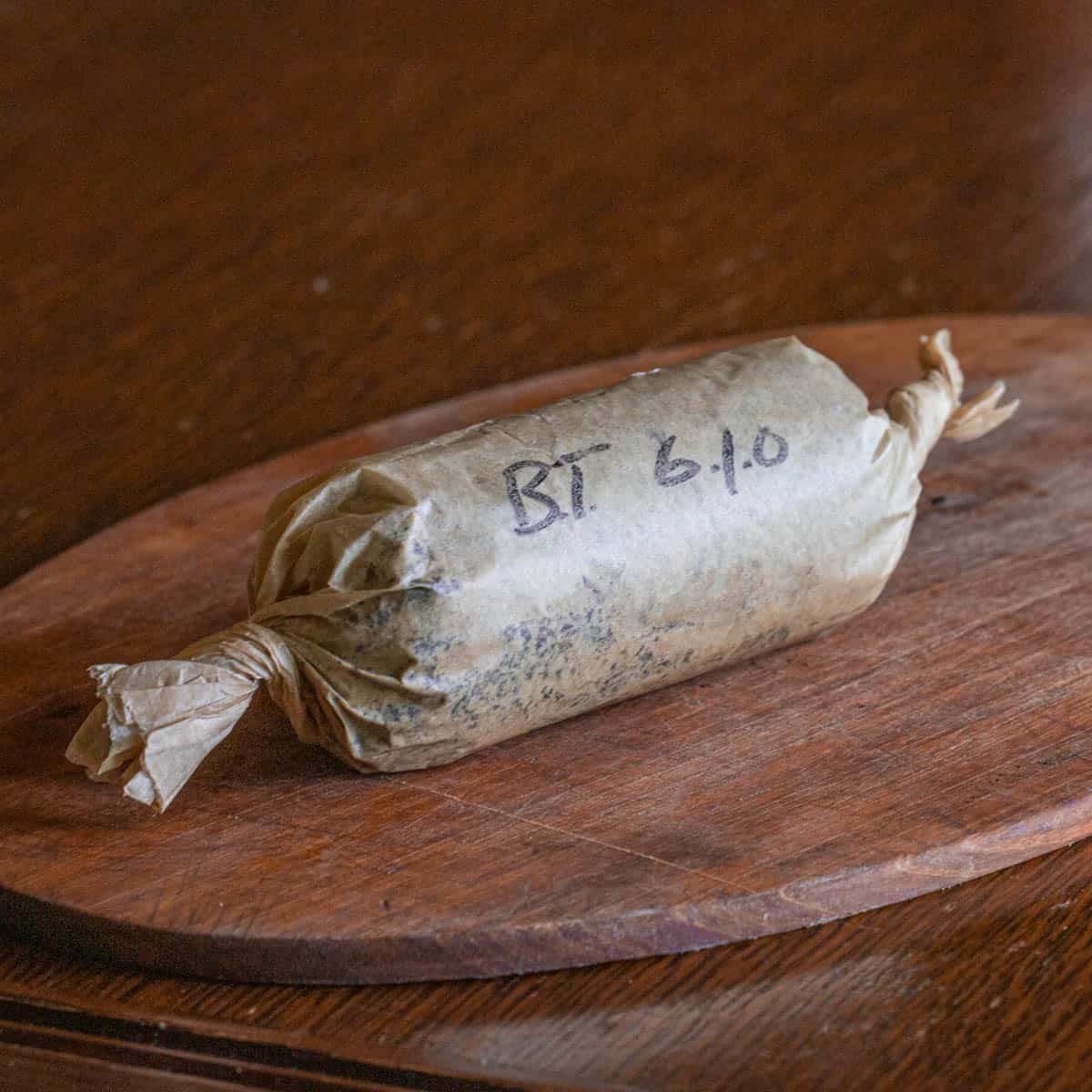
What is Mushroom Butter?
Mushroom butter is a compound butter made from mixing unsalted butter and cooked mushrooms, herbs, cooked shallots and seasonings. It's one of the best ways to use dried mushrooms and many different varieties can be used.
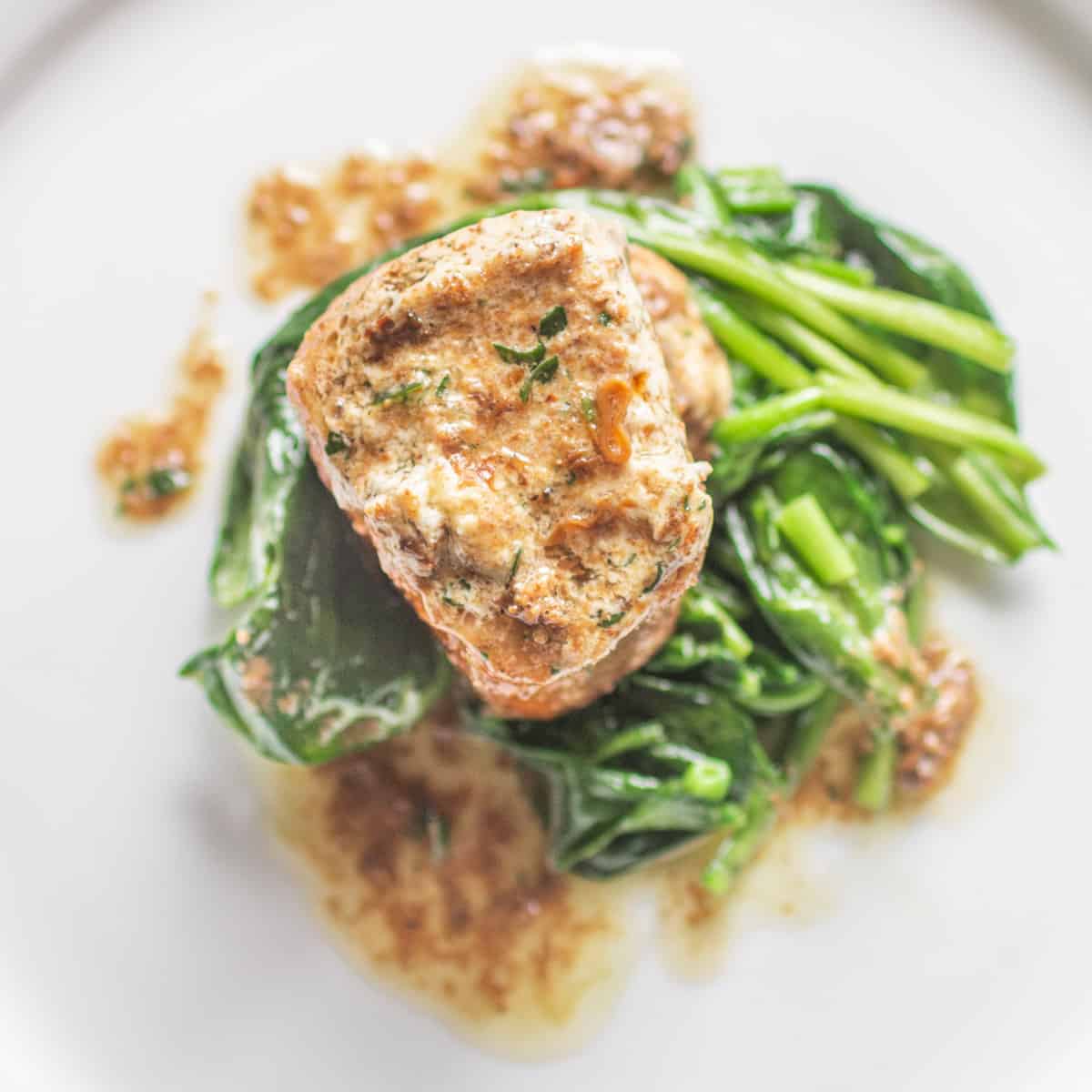
Using Dried Mushrooms
Dried mushrooms, especially wild ones are at their best here. When mushrooms are dried, it concentrates their flavor. When the mushrooms are rehydrated in liquid, it becomes a concentrated nectar that can be reduced down and whipped into butter, giving more flavor than if you used fresh mushrooms.
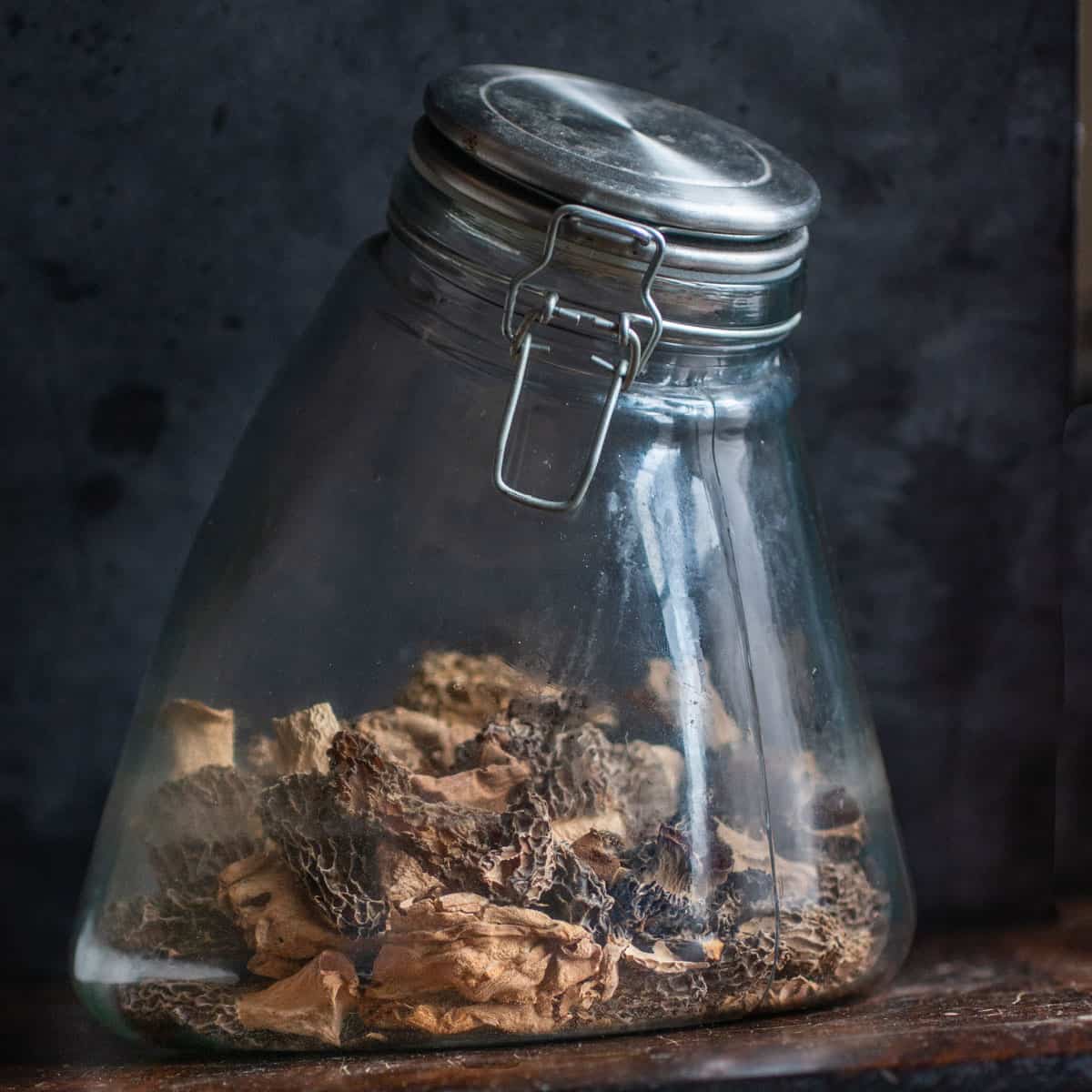
Using Fresh Mushrooms
You can make a compound butter with fresh mushrooms and they're good. My favorite is Fresh Porcini Butter.
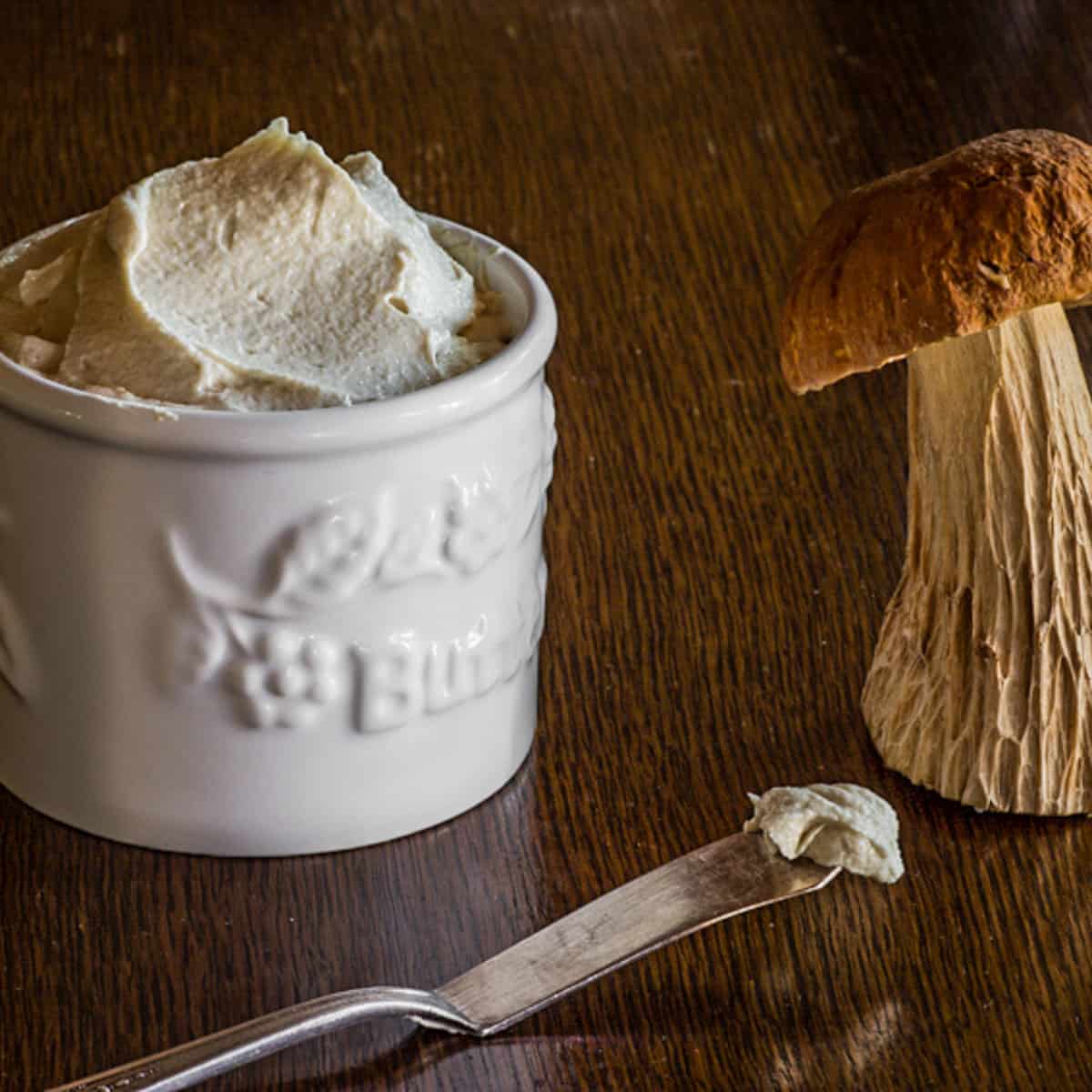
Shiitakes make a great too. But, dried mushroom butters are stronger tasting and more flavorful as a rule because they include the concentrated liquid from rehydrating.
Basic Process
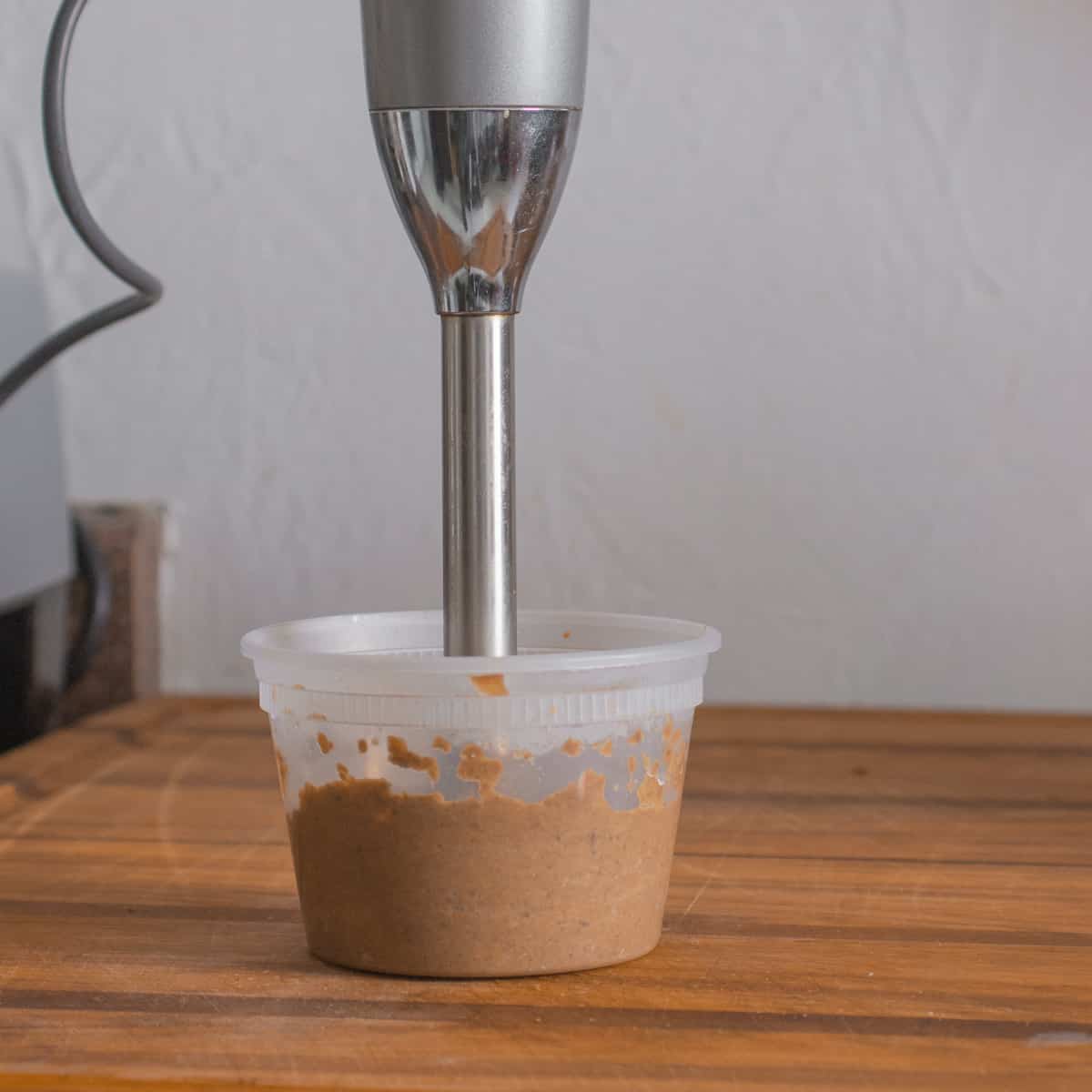
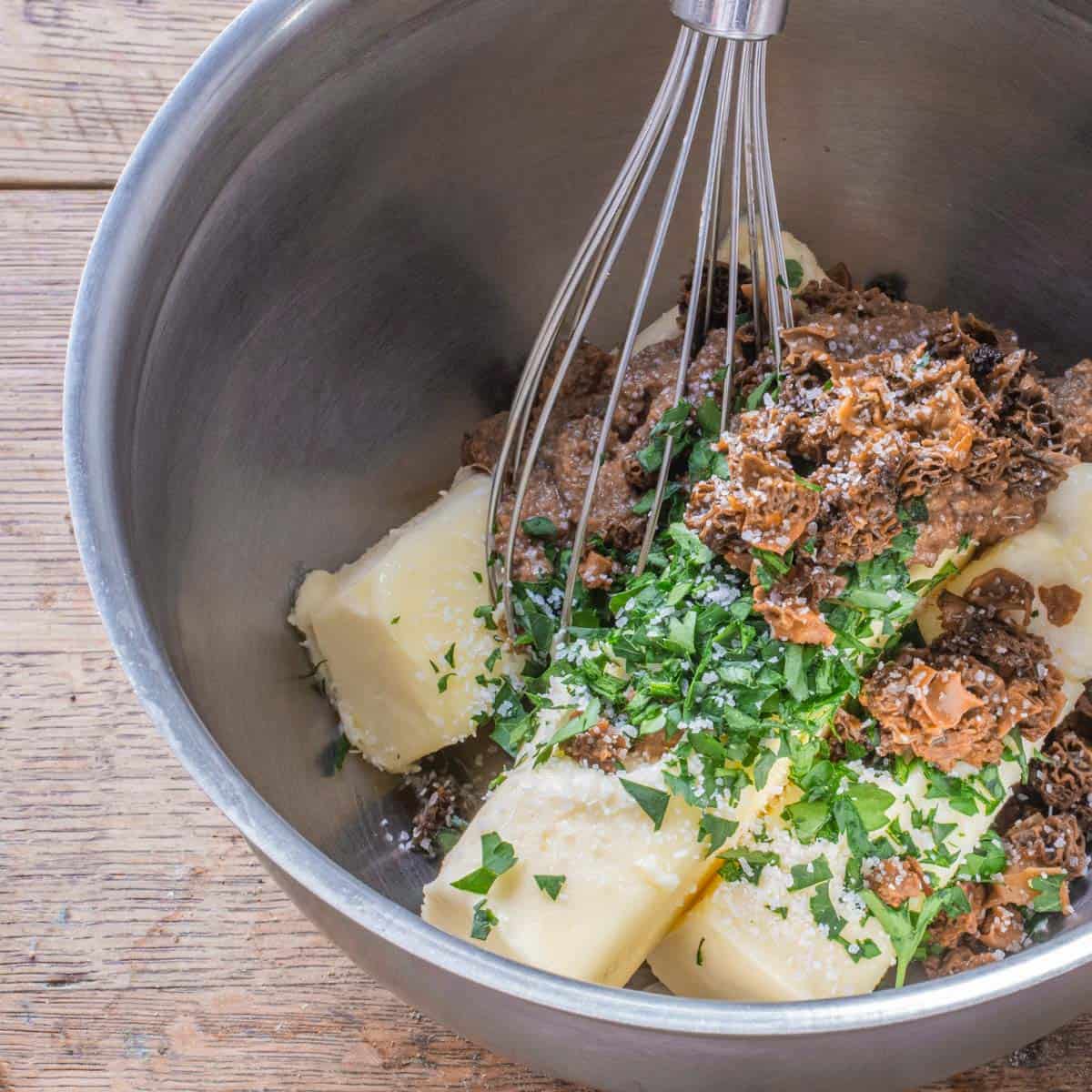
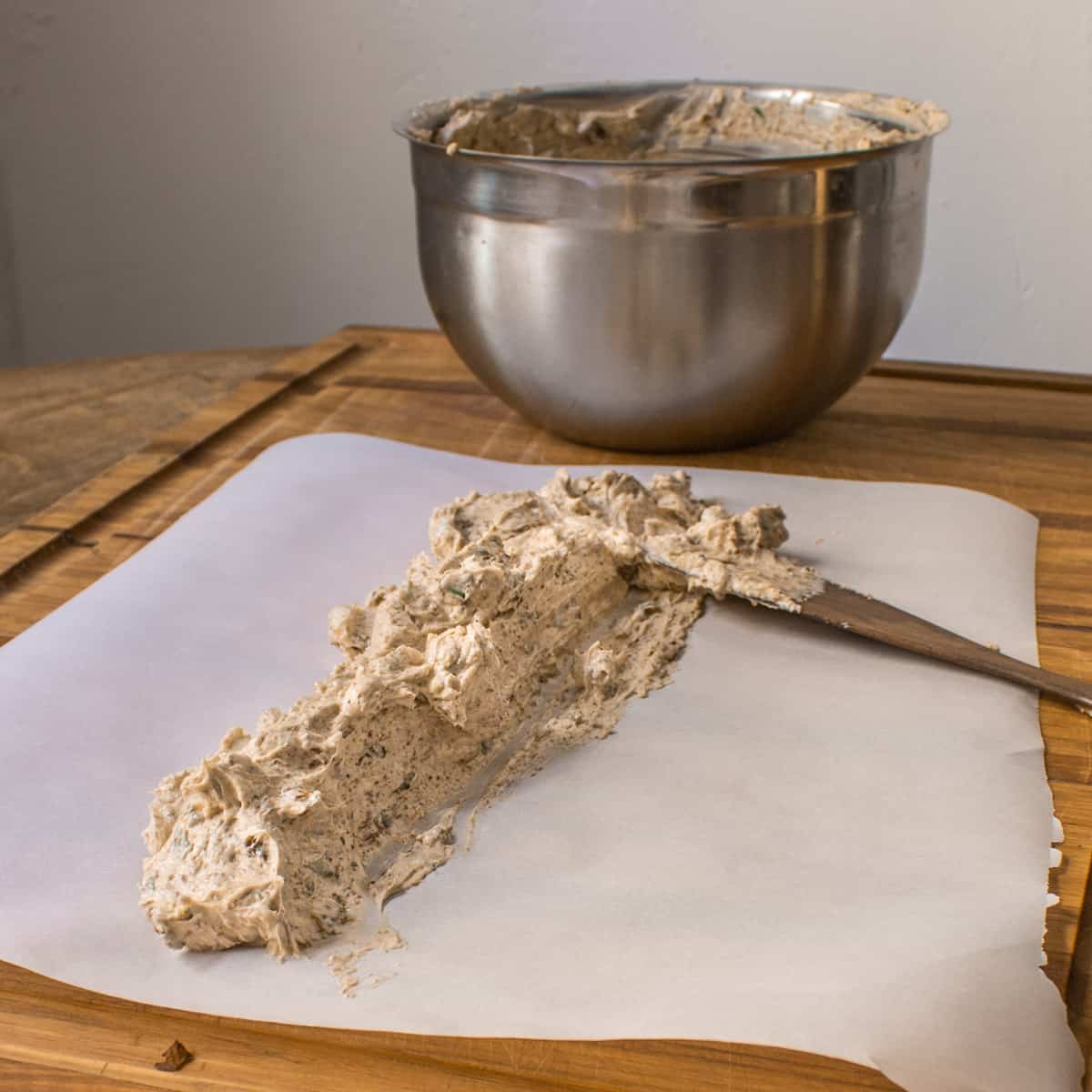
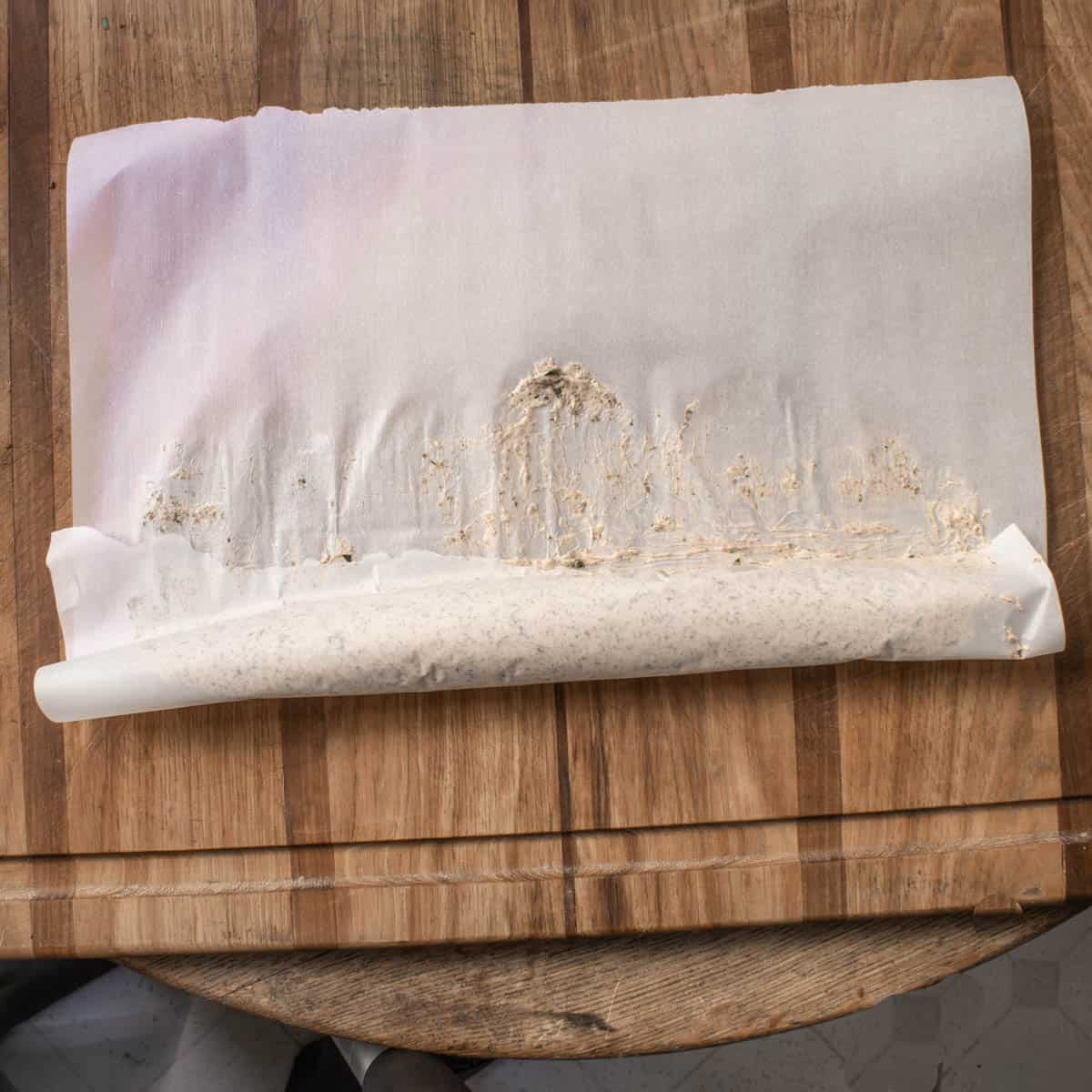
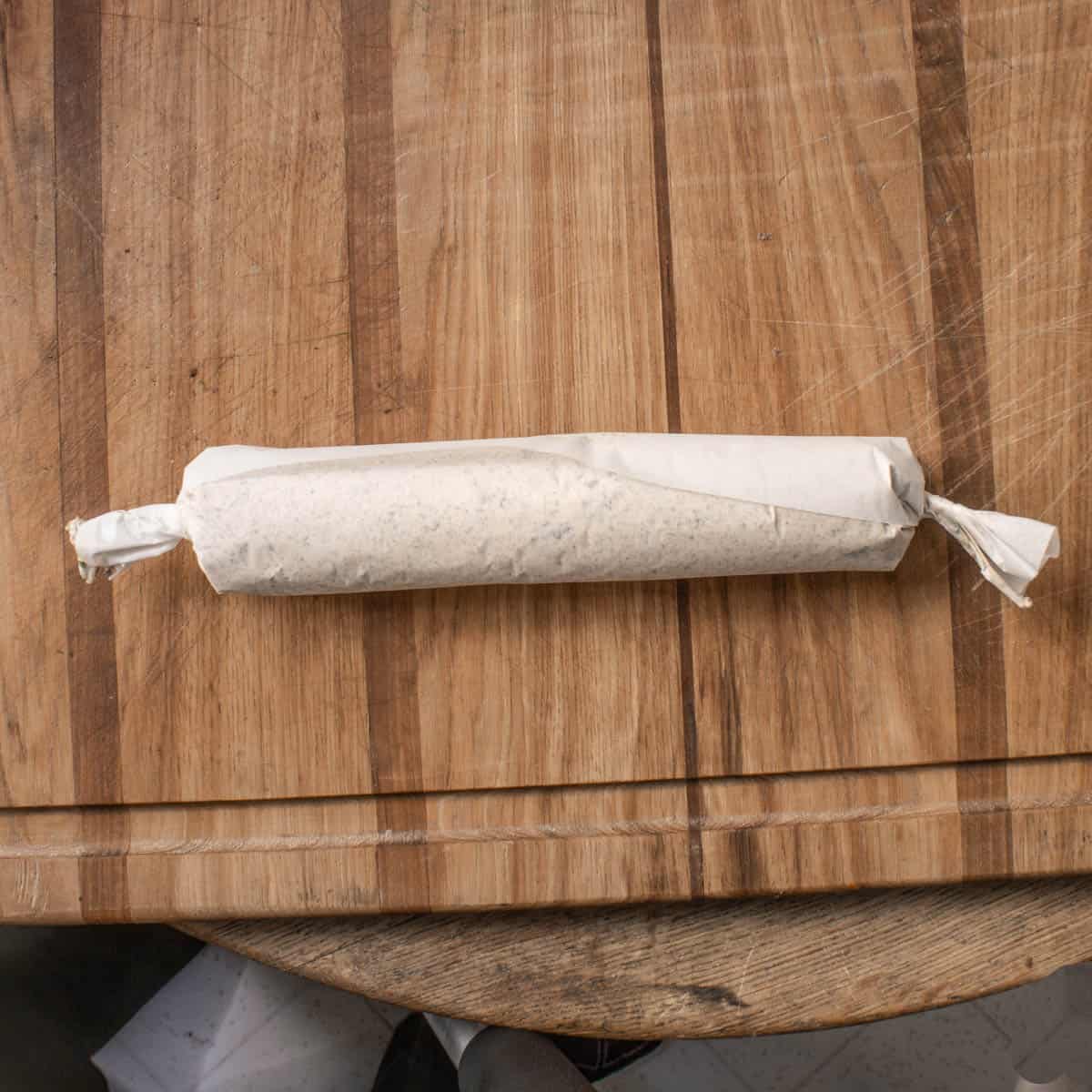
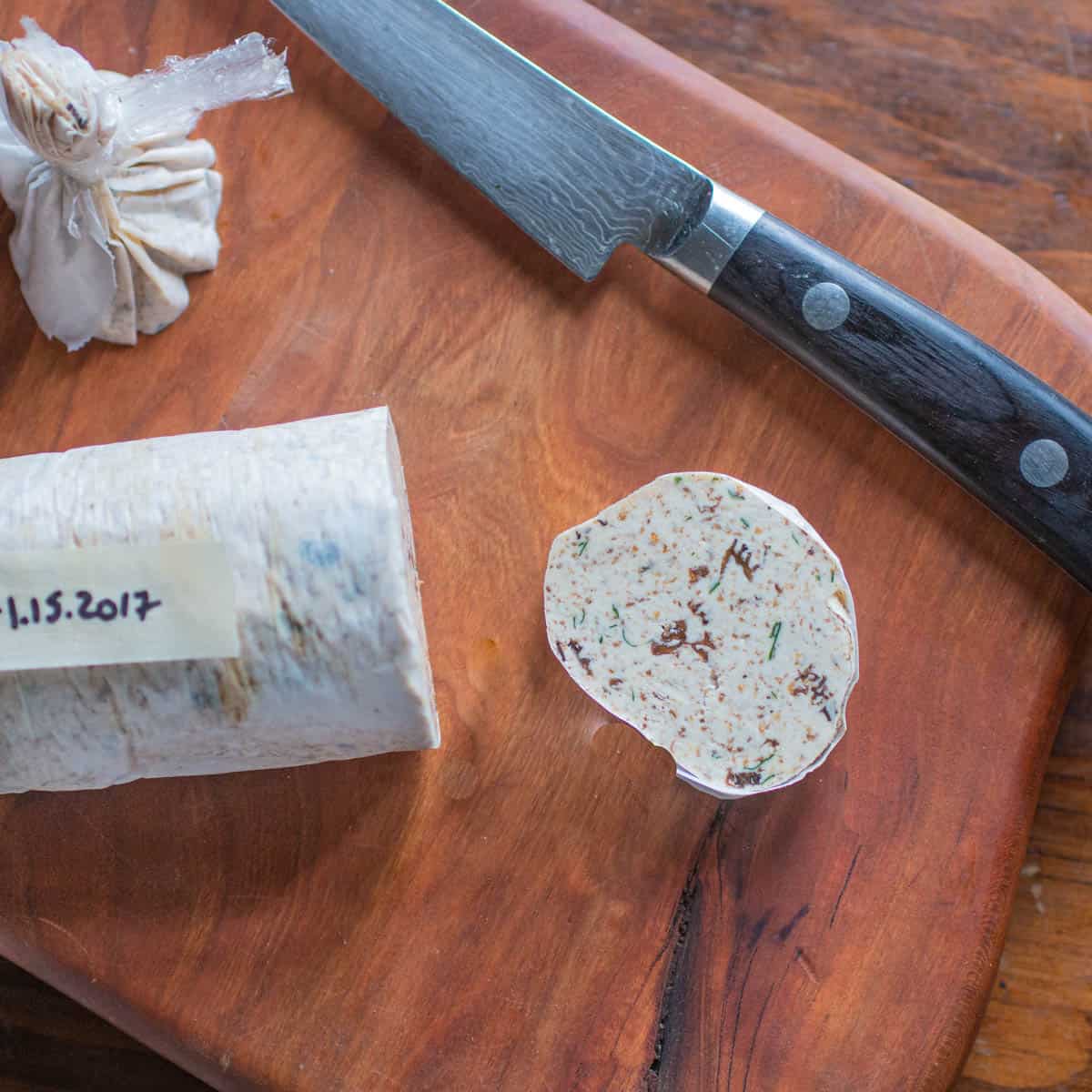
How to Use Mushroom Butter
Compound butter is extremely versatile. It's often melted on steaks, but can also be used anywhere you would use butter or a spread. It's hard to even count the ways I use this. Here's a few ways I've served it over the years.
- Tossed into a pan of pasta to make a quick, delicious sauce. Think mixed vegetables, fettucine and mushroom butter sauce.
- Melt the butter on grilled or pan seared steak.
- It's great with almost every meat: broiled or grilled fish, venison steaks, pork chops, poultry and more.
- Tossed with vegetables for simple side dishes.
- Warmed up as a dip for artichokes, preferably with a little garlic grated in.
- Whisked into pan sauces for fish and chicken at the last minute.
- Tossed with cooked fresh peas and thin slices of prosciutto.
- Stirred into soups and sauces.
- Tossed with sauteed mushrooms at the end of cooking.
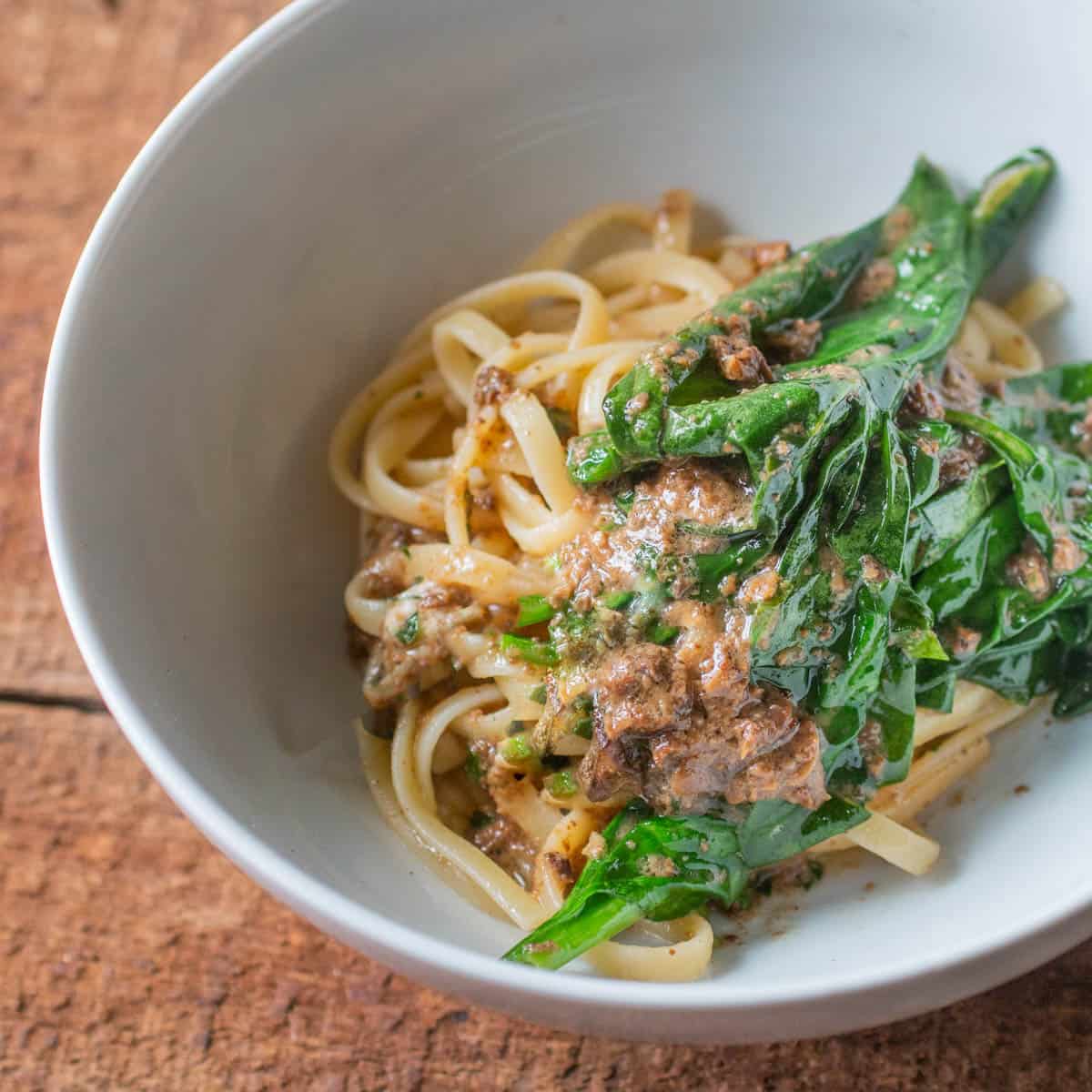
Know your mushroom types
Some mushrooms make great compound butter and some don't. Ideally you want a variety that has a lot of flavor when dried, but is also soft enough to be pureed in a food processor.
Varieties to avoid
Some varieties become hard after drying and will be too chunky. Dried shiitakes, chicken of the woods, hen of the woods, and hedgehog mushrooms are good examples to avoid.
Best Varieties
The best of the best. Each of the species below either dried or fresh will give excellent results. Cultivated mushrooms like baby bellas and portobellos don't have much flavor compared to these.
- Black Trumpets
- Porcini
- Candy Cap
- Morels
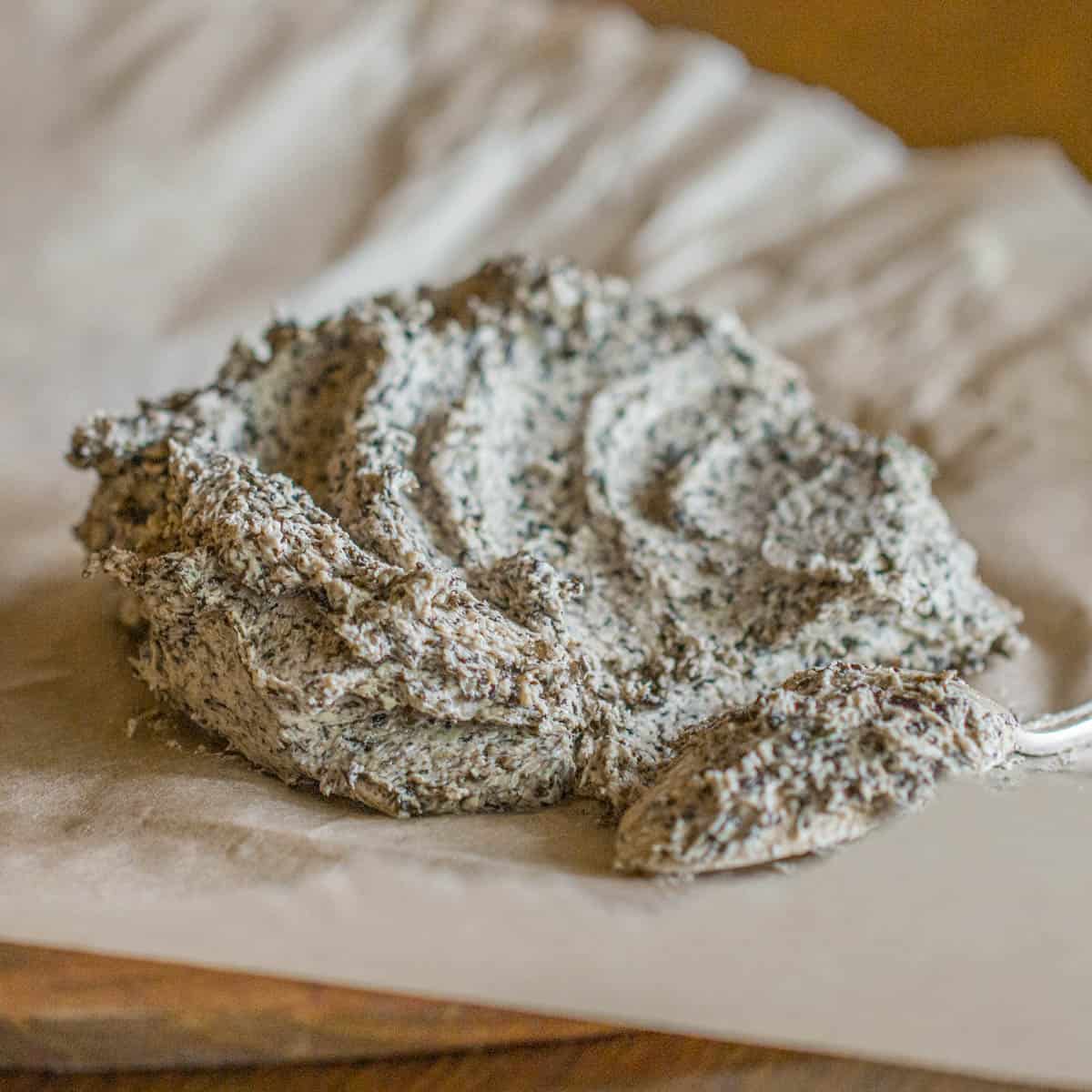
Related Posts
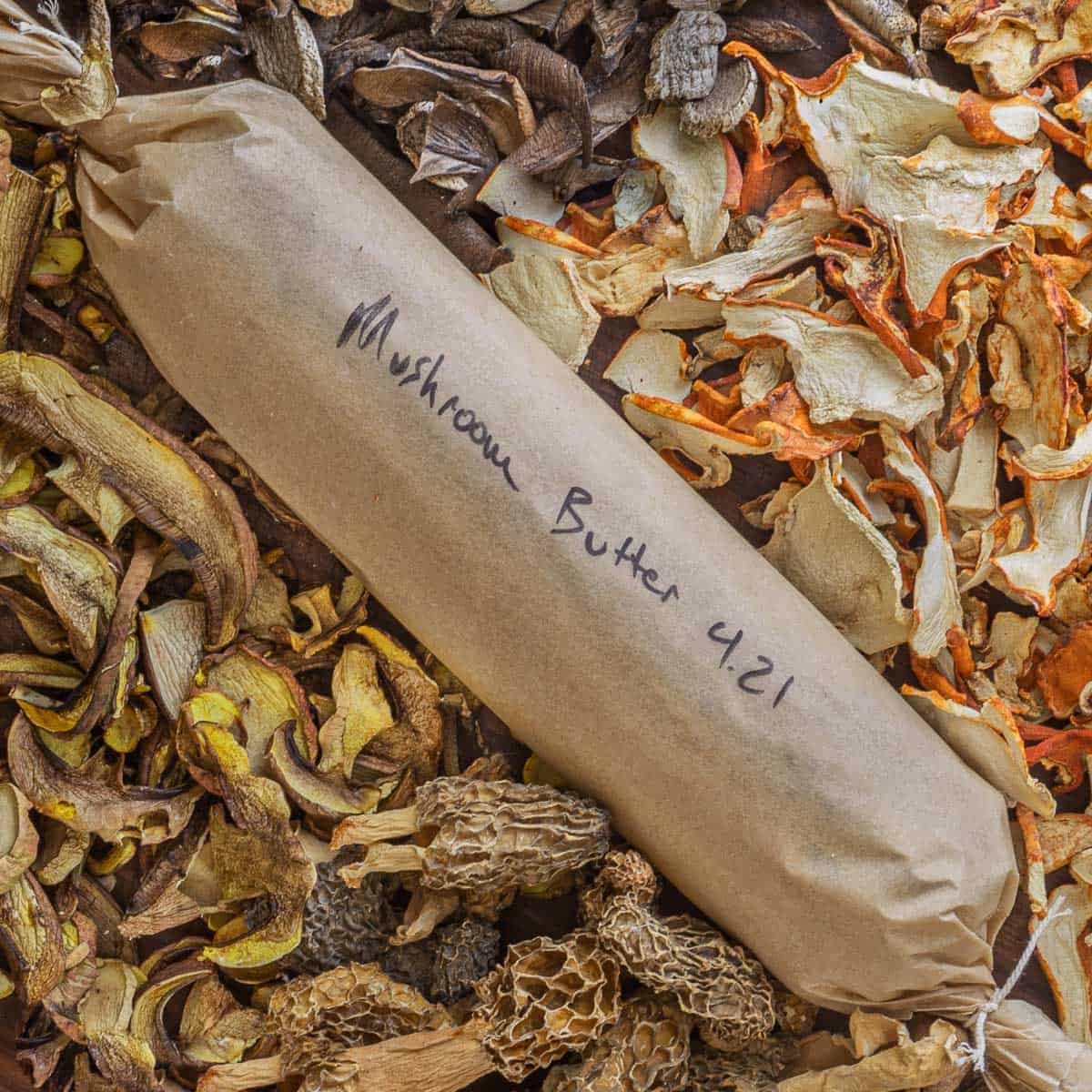
Basic Mushroom Compound Butter
Equipment
Ingredients
- 1 oz dried mushrooms such as black trumpet or porcini
- 1.5 cup boiling water
- ¼ cup dry sherry
- 1 lb unsalted butter cut into ~1x1 inch cubes, at room temperature
- 2 tablespoons grapeseed oil or butter
- 1.5 teaspoons kosher salt
- 2 large shallots diced ¼ inch to yield about ½ cup or 4 oz
- 2 teaspoons finely chopped fresh thyme
- 2 cloves garlic minced
Instructions
- Re-hydrate the black trumpet mushrooms in the water until softened, about 20 minutes. Agitate the mushrooms in the water to remove any grit, then remove, strain the liquid, then coarsely chop the mushrooms. Reserve the liquid and mushrooms separately.
- Add the garlic, shallot and two tablespoons of butter or oil to a 10 inch frying pan. Cook on medium high heat until the shallot is translucent, about 3 minutes.
- Add the mushrooms and continue cooking until the edges of the pan show some color and the shallots have lost some volume and are just starting to brown.
- Deglaze the pan with the sherry.
- Add the strained mushroom liquid along with the thyme and bring the mixture to a simmer for 15 minutes, or until the pan is almost dry. It's important to remove as much moisture as possible here.
- Transfer the mixture to a food processor or use a hand blender to process to a smooth-ish paste.
- Season the puree with the salt, mix to combine, and cool to room temperature.
- When the puree is cool, mash it in a bowl with the room temperature butter or whip in a stand mixer with the whisk until light and fluffy.
- Double check the seasoning for salt and pepper and adjust until it tastes good to you. Transfer the butter with a spatula to parchment or wax paper and roll tightly into a log, then tie the ends closed with string or plastic wrap. Label, date, and freeze in a Ziploc bag until needed.
- The butter can be kept in the fridge, and will keep for a week. If you're not going to use the butter in a few days, keep it in the freezer, then you can pull out the log(s), allow to thaw for 10 minutes before cutting. Cut off pieces as needed, returning the butter to the freezer.
- Note that the butter can separate during freezing. You can let the butter soften at room temperature and blend it in a food processor to restore the smooth consistency.

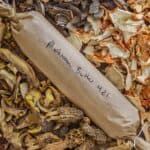
Stephanie Willis
Delicious way to use the black trumpets! Thanks!
I did notice that my one chopped shallot was a half of a cup and it weighed 2 oz. So I just went by the weight for the recipe for the shallot (4 oz) and not the measurement. Turned out great. Also, you mention sautéing the garlic with the shallot, but there's no garlic in the ingredient list, so I just did 5 cloves.
Alan Bergo
Thanks Stephanie. I gave the recipe another copy edit so everything's in there.
Kristi
How about putting the butter in ice cube trays so smaller portions? Anyone try it?
Alan Bergo
Yes this is fine.
Andy
I love this idea. Could Pheasant Back mushrooms be used to make mushroom butter, or are they too bland?